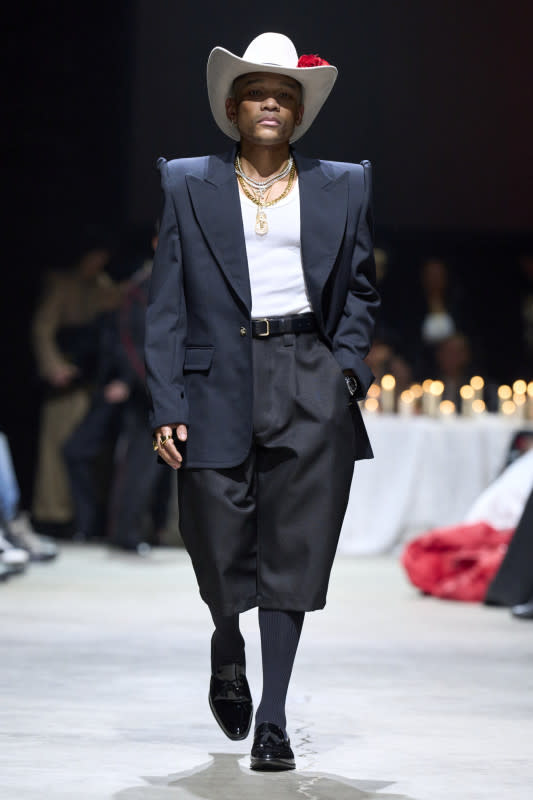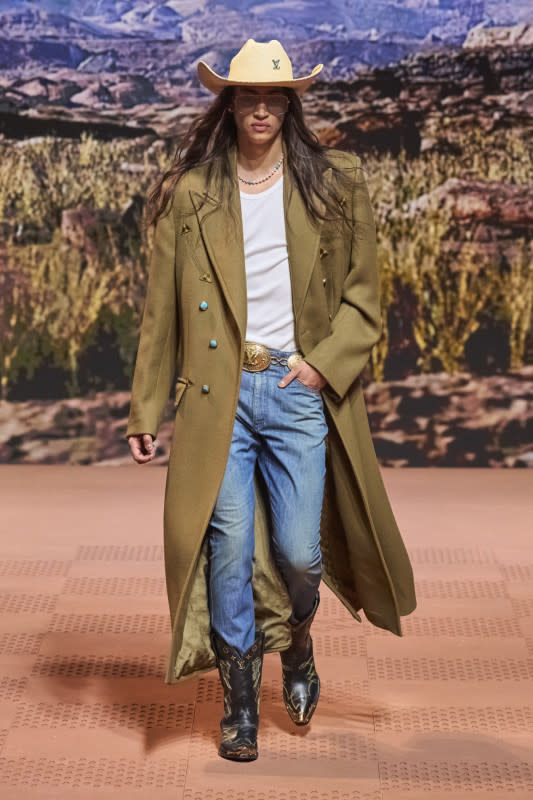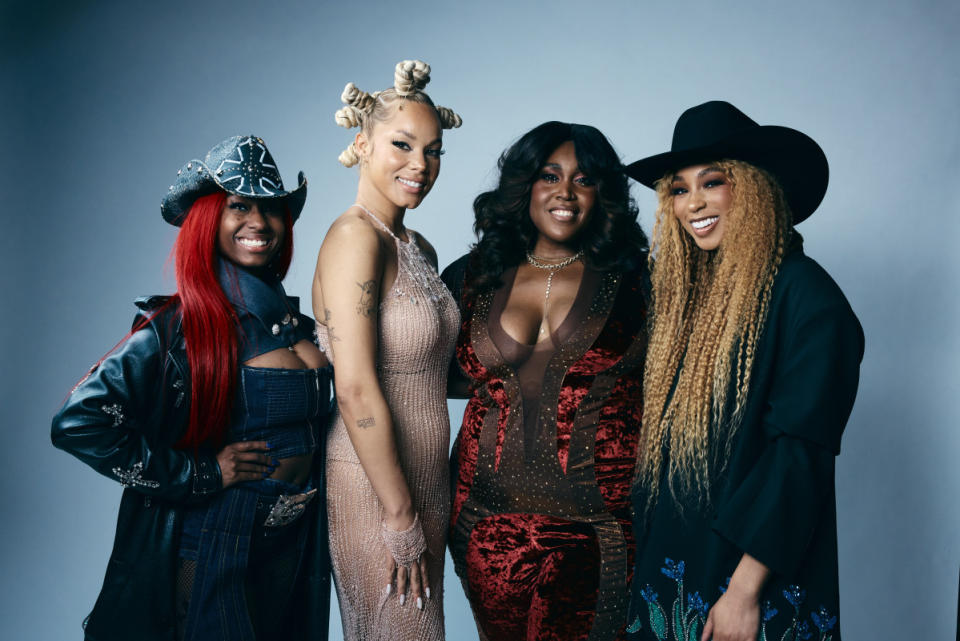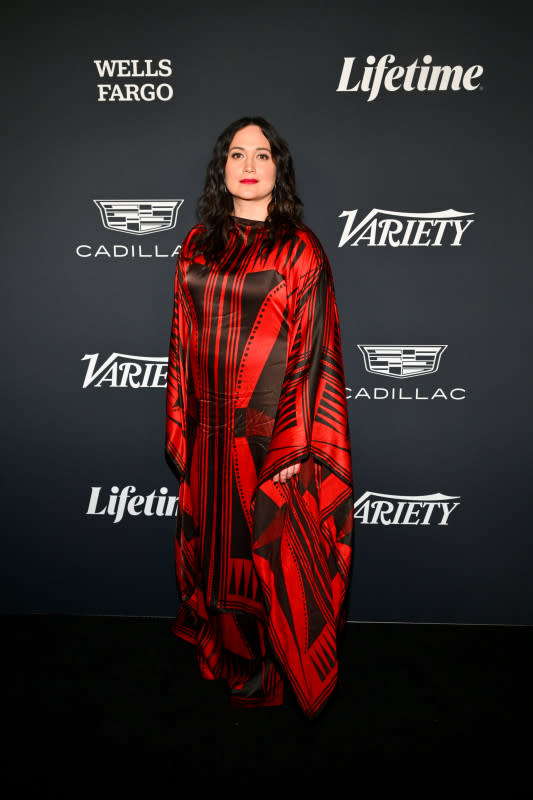Fashion's Western Moment Is About Changing the Narrative
- Oops!Something went wrong.Please try again later.
- Oops!Something went wrong.Please try again later.
- Oops!Something went wrong.Please try again later.
Beyoncé's "Cowboy Carter" — the second part of a three-act project that started with her 2022 album "Renaissance" — opened with a bold statement: "Covered in peace and love, y'all / A lot of taking up space."
Now, we all know Beyoncé is referencing an incident at the 2016 Country Music Association Awards. But the opener of "Ameriican Requiiem" represents a return to Western style that subverts all of its whitewashed history, one cowboy hat at a time — exactly what fashion's Black and brown creatives have been manifesting over the past few years.
Take, for example, Willy Chavarria's Spring and Fall 2024 collections, which featured exaggerated collars, big cowboy hats and wide-leg denim inspired by the designer's Chicano heritage. Or Pharrell Williams' Fall 2024 menswear collection for Louis Vuitton, set on a stage that mimicked the American West on a Parisian bridge over the Seine, which included cowboy hats, boots, utilitarian denim, leather fringe and flower-embroidered collared shirts.

Photo: Launchmetrics Spotlight

Photo: Launchmetrics Spotlight
Jonathan Square, assistant professor of Black Visual Culture at Parsons School of Design believes this reclaiming of the Western aesthetic is linked to the rise of white nationalism. "I think creatives of color are also wanting to make a stake on American identity," he argues.
What we know today as Western style is rooted in the 1800s, not only in the American West, but also in modern-day Mexico, Argentina and other Latin American countries. It was largely defined by the uniform of ranchers and cowboys, whose utilitarian clothes — durable denim, sun-covering hat, metal spurs — became staples over centuries. Despite the notion that this is a style largely forged by white people, "Latinx, Indigenous and Black communities were integral to what we think of as the Old West," according to Square.
Historians believe that, in 19th-century Texas, one in four cowboys were Black, a legacy that lives on today via riding clubs like the Big Rodeo Project. Riding is also an essential activity for many Indigenous nations, leading to nationally-known figures like Jackson Sundown, who became the first Native American rider to win the Bronco Bucking Championship of the World. In pop culture, musicians like Linda Martell (who's featured on "Cowboy Carter") set a precedent for women like Tanner Adell and Brittney Spencer to forge careers in country music; Tejano queen Selena Quintanilla also paid tribute to cowboy culture in Texas, even playing a record–breaking show at the Houston Rodeo.

Photo: John Shearer/Getty Images for CMT
Today's Western takeover in mainstream fashion and music is finally representing the wide set of communities that contributed to this style's development. Aside from Beyoncé's "Cowboy Carter," Bad Bunny's "Nadie sabe lo que va a pasar mañana" evokes cowboy culture from a dual perspective: the desert landscapes of California and the caballistas from the countryside of his native Puerto Rico. We see the Puerto Rican rapper dressed in a double-denim ensemble as he walks through a desert in the video for "Where She Goes"; in the visuals for "No Me Quiero Casar," he joins a traditional cabalgata through the hills of Corozal, Puerto Rico, wearing a straw hat and flannel shirt. We've also seen Mexican regional music, including the controversial corridos tumbados, take over the charts, and artists like Karol G, Becky G and Peso Pluma evoke symbols of cowboy culture in Latin America in their stagewear.
Johnetta Boone, the costume designer behind the Paramount series "Yellowstone," sees the current reclamation of Western style from Black and brown communities not as a narrative shift, but as an opportunity to highlight their contributions while acknowledging the violence that has led to this moment. "It's also coming to the surface now," she says. "It's important to give credit where the credit is due."
Boone hopes this focus on Western style brings attention to the artisans and craftspeople, especially from Indigenous communities in the American West. "What happens when you're purchasing pieces that are made outside of a community of people, you lose the sensitivity and the connection to the artists themselves," she says.

Photo: Michael Buckner/Variety via Getty Images
The costume designer — who has also worked in productions like "Hustle" and the 2012 remake of "Steel Magnolias" — speaks from personal experience: Working on "Yellowstone" has required her to form connections with the Indigenous communities the shows represents (as well as the actors), prioritizing pieces made by them, which can vary from specific types of horse-riding leggings to sterling silver Navajo jewelry. Elsewhere in Hollywood, Lily Gladstone and stylist Jason Rembert spotlighted Indigenous communities' role in shaping Western style throughout the actor's press cycle for "Killers of the Flower Moon," wearing pieces by designers like Jamie Okuma and Molly Murphy-Adams.
Going back to the runway, the idea of highlighting heritage is one that runs through Chavarria's work. "I've always understood what this country is all about," he told the Los Angeles Times last year. Chavarria has often paid tribute to Chicano culture, specifically Los Angeles lowriders and the '90s queer scene. For his Fall 2024 collection, titled "Safe From Harm," he dove into Latinx influences in the American imagination of Western style: oversized cowboy hats and flamboyant rosette brooches, paired with gold chains, flannel shirts and oversized denim, mixing the utilitarian and exuberant.
"It’s a way to show that this legacy of cowboys and the ranches is something that also exists in different forms in Latin America," says fashion academic and founder of Culturas de Moda, Laura Beltrán. "We tend to forget that a big part of this Wild West used to be Latin America." While it was land owners in the colonial era that first implemented this style, it's the working people who have made it into what we know today, she argues — a clear reference found in the work of Chavarria, who grew up among immigrant farmers in California.
"It's about reacting to erasure," says Square. "A lot of these communities have been erased from the popular American imagination, and they're saying, 'This is my history, too.'"
Never miss the latest fashion industry news. Sign up for the Fashionista daily newsletter.

